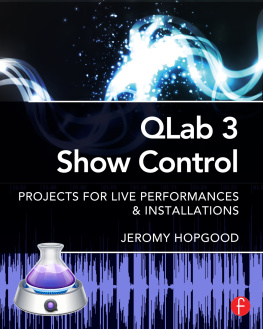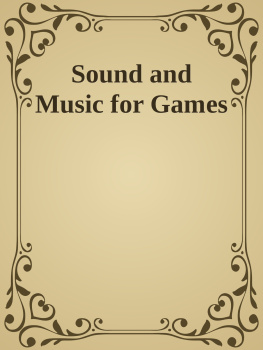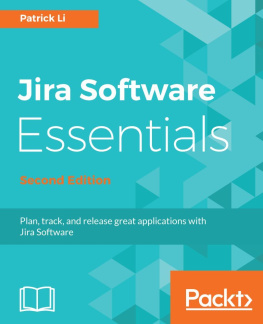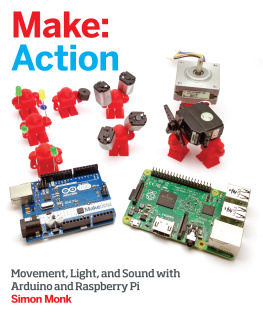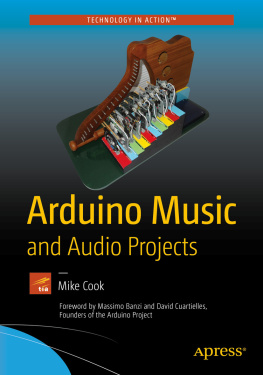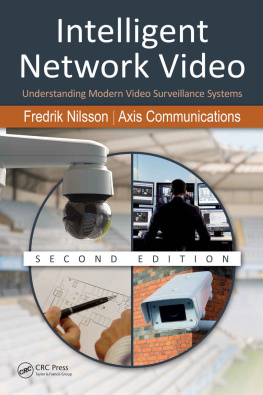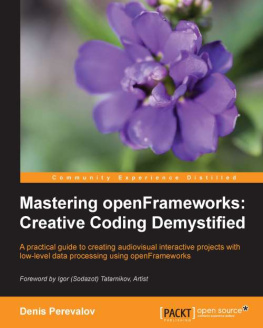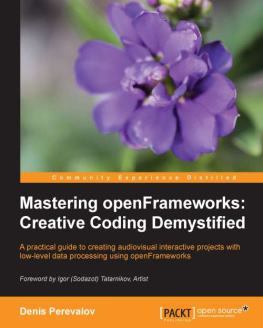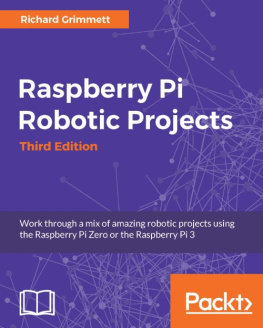
QLab 3 Show Control
QLab 3 Show Control
Projects for Live Performances & Installations
Jeromy Hopgood

First published 2014 by Focal Press
70 Blanchard Road, Suite 402, Burlington, MA 01803
and by Focal Press
2 Park Square, Milton Park, Abingdon, Oxon OX14 4RN
Focal Press is an imprint of the Taylor & Francis Group, an informa business
2014 Taylor & Francis
The right of Jeromy Hopgood to be identified as author of this work has been asserted by him in accordance with sections 77 and 78 of the Copyright, Designs and Patents Act 1988.
All rights reserved. No part of this book may be reprinted or reproduced or utilised in any form or by any electronic, mechanical, or other means, now known or hereafter invented, including photocopying and recording, or in any information storage or retrieval system, without permission in writing from the publishers.
Notices
Knowledge and best practice in this field are constantly changing. As new research and experience broaden our understanding, changes in research methods, professional practices, or medical treatment may become necessary.
Practitioners and researchers must always rely on their own experience and knowledge in evaluating and using any information, methods, compounds, or experiments described herein. In using such information or methods they should be mindful of their own safety and the safety of others, including parties for whom they have a professional responsibility.
Product or corporate names may be trademarks or registered trademarks, and are used only for identification and explanation without intent to infringe.
Library of Congress Cataloging in Publication Data
Hopgood, Jeromy.
QLab 3 show control : projects for live performances & installations / Jeromy Hopgood.1st edition.
pages cm
ISBN 978-0-415-85757-4 (pbk.)ISBN 978-0-203-79726-6 (ebook)
1. QLab. 2. TheatersStage-setting and scenery. 3. Performing artsTechnological innovations. 4. Multimedia systems. I. Title.
PN2091.S8H66 2013
006.7dc23
2013032998
ISBN: 978-0-415-85757-4 (pbk)
ISBN: 978-0-203-79726-6 (ebk)
Typeset in ITC Stone Sans
Project Managed and Typeset by: diacriTech
Bound to Create
You are a creator.
Whatever your form of expression photography, filmmaking, animation, games, audio, media communication, web design, or theatre you simply want to create without limitation. Bound by nothing except your own creativity and determination.
Focal Press can help.
For over 75 years Focal has published books that support your creative goals. Our founder, Andor Kraszna-Krausz, established Focal in 1938 so you could have access to leading-edge expert knowledge, techniques, and tools that allow you to create without constraint. We strive to create exceptional, engaging, and practical content that helps you master your passion.
Focal Press and you.
Bound to create.
Wed love to hear how weve helped
you create. Share your experience:
www.focalpress.com/boundtocreate
Contents
As with any project of this size, there are a number of people without whose help the idea would never have become a reality. Working in the theatre makes one ever cognizant of the sheer power of collaboration. Those who survive long in most of the areas of the entertainment design and technology industry realize the importance of acknowledging all the people who helped them along the way on a project. So, here goes my laundry list of people who helped turn this labor of love into a possibility.
Many thanks to John Holloway for the inspiration to ever get off my tail and write something in the first place. Check out his fantastic Illustrated Theatre Production Guide, also by Focal Press (soon in its Third Edition). Stacey Walker, my acquisitions editor, listened to my ideas and brought so many more positive contributions to the project. Meagan White, my editorial project manager, answered every question thrown her way with poise.
There are a number of people who answered questions, explained things that I didnt understand, and generally kept the boat on the right course: David Stoughton of Hamilton College; John Dalziel of Ripon College; Michael J. Riha of the University of Arkansas; and Jake Pinholster of Arizona State University. To Chris Ashworth and the entire Figure 53 family, thanks for answering my countless emails and serving as technical editors of this book. Many thanks are also due to the amazing community of peers at the Figure 53 Discussion List who answered so many questions and requests over the years and without whose support this text would not have happened.
It has been a pleasure to serve as a professor at Eastern Michigan University over the past 6 years. Thanks are due to my colleagues and students for their input and especially to EMU for awarding me a Faculty Research Fellowship to complete my research and writing.
Finally, the two people to whom I always owe the greatest amount of gratitude (for this or any project) are my wife and daughter. Thanks to Katie and Kira for their understanding of the countless hours I spent huddled over my laptop at the Arborland Starbucks. Now that its all done, lets go to the beach!
The entertainment industry is an ever-expanding combination of several different areas (scenery, costumes, lighting, sound, integrated media, automation, etc.). All of these areas work together for the sole purpose of creating new and interesting ways to tell stories and entertain our audiences. As technologies for all these separate areas expand, though, it becomes increasingly important to find ways of unifying control of these areas while keeping the flexibility for each area to function as a unique component of the whole. This need is the driving force behind programs like QLab, which allow for the integration of several different production systems into one centralized control interface.
ENTERTAINMENT CONTROL SYSTEMS
In the early days, it was simple enough to have a board operator for each area and a stage manager calling go. As technology advanced, increasingly complex electronic devices became commonplace in live performance scenarios. For todays entertainment industry, a show might incorporate dozens of different production specialties, such as lighting, sound, rigging, automated scenery, projections/media, pyrotechnics, or many more. For each of these different areas there might be one or more different entertainment control systems, or the combination of elements required to control one element of the production design.
One show might have several entertainment control systems, such as a lighting system, sound system, fog system, or automated machinery system. Each of these systems include the entertainment equipment, necessary cabling (or wireless interfaces) for control signals, and some type of control mechanism. Almost all performances include, at minimum, systems for lighting and sound, though many may include video, automated scenery, or special effects (such as fog, haze, and pyrotechnics).
WHAT IS SHOW CONTROL?
Show control is an often-misused term, but a simple concept to understand. Show control is simply a method of linking together multiple entertainment control systems into one master system. Typically speaking, show control is categorized as one of two types: software operating on either a Mac or a PC platform; or stand-alone systems developed in a proprietary fashion by manufacturers. For either method, the concept remains the same multiple control systems are linked together for the purpose of unifying (and simplifying) their control.
Next page
